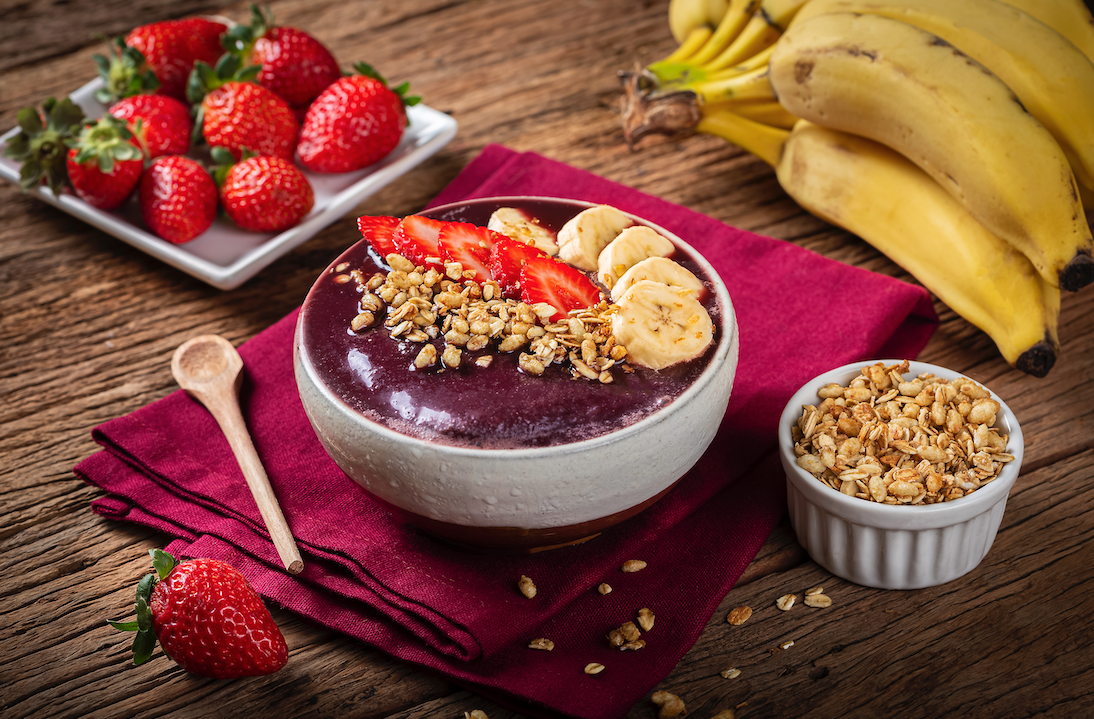
Aronia
One of the most powerful superfood got it’s popularity in western world recent years, but have been used as a household remedy for everything from medicinal tea for common cold to help with general weakness of the organism.
Usage
Chokeberries in aronia contain a significantly larger biologically active content of flavonoids than blackberries, raspberries, or strawberries.
The antioxidant potential of chokeberries has been demonstrated through experiments with model organisms: it reduces the oxidative stress induced by modern-day living, diseases, and physical activity.
Beneficial effects of aronia in a form of juice include a positive effect on blood lipid concentration (popular).
High levels of antioxidants
It’s the most powerful antioxidant known today.
Protect against cancer
Potential anti-mutagenic (cancer prevention) effects need more investigation.
Support Immunity
Antibacterial, antiviral, and anti-inflammatory activity have been shown in various experiments.

Ancient Herbal Therapy
People of The Great Plains, Potawatomi, called them ‘‘nıˆki’mıˆnuˆn’’ or‘‘sakwako’mıˆnuˆn.
The center of Aronia melanocarpa was in the northeastern states of the USA and the Great Lakes region, with a range extension into the higher altitude of the Appalachian Mountains.
They prepared medicinal tea to alleviate the common cold. The berries were also an ingredient of “pemmican”, a nutrient-dense mixture of dried meat and berries that could be preserved for a long time.
When Aronia arrived in the Soviet Union in the 19th century, it was widely accepted for industrial production: it was available in large quantities displayed a flashy, vibrant (read: sellable) color.
However, no potential health benefit could escape the watchful eye of an Eastern European housewife. Aronia household remedies were used for high blood pressure, avitaminoses, hemorrhoids, and general weakness of the organism.
How to add Aronia to your diet?
Chokeberries are astringents, and their taste has been described as the tart with earthy undertones.
If you’re not a fan of this dry, slightly sour, wine-like experience for your taste buds, rest assured that there are many other ways you can incorporate them into some of your meals: they are commonly cooked into juices and mixed jams, and baked into pies and tarts.
Furthermore, they can be dried and turned into powder, which you can easily add to your regular yoghurt or smoothie.
There is no definite daily intake recommendation, so treat them as an addition to a well-balanced diet.
Raw
Can be eaten fresh, but their mouth-drying effects may not be for everyone.
Aronia Juice
Try taking 30-50 ml of aronia juice in the morning on an empty stomach (popular way).
Baking
Add them to muffins, cakes, and pies.
Which flavor profiles go well with chokeberries?
Blackberries, Blueberries, Raspberries,
Strawberries
Pineapple, Lemon, Sour cherries, Oats and oatmeal, Cashew nuts
In the past, native American tribes used aronia regularly, both in cuisine and in traditional medicine.
The center of Aronia melanocarpa was in the northeastern states of the USA and the Great Lakes region.
Aronia arrived in the Soviet Union in the 19th century, and right away it was widely accepted for industrial production.
About
Aronia is a Latin genus name of the plant whose berries are colloquially known as chokeberries, goose wildberries or choke pear. The two well-known shrubs, Aronia melanocarpa, and Aronia arbutifolia have North American origin but made their way to Europe on the strength of their potent pigments and resistance to numerous diseases.
The striking beauty of all parts of the plant and its ornamental use was suddenly overshadowed by the discovery of its antioxidative potential.
Shortly after, you could see the name Aronia everywhere: mainstream supplement commercial, popular culture, the hand-written label of your grandmother's jam jar, and a ridiculously expensive bottle of wine in privately held winaries.
Composition
The deep red, purple, or black colour of the berries is a result of a mixture of polyphenols (especially flavonoids). The original purpose of the mighty organic compounds is protecting the plant from herbivores.
Side Effects
No toxicity was observed for chokeberry extracts.
Although no toxic compounds were found in the chokeberry extract, keep in mind that long-term research is still necessary to confirm safety. If you’re eating raw chokeberries, make sure to consume them in moderation if you want to avoid dryness in your mouth and an unpleasant after-taste. Always consult with your healthcare provider if you are on a medication and are unsure about a potential interaction, pregnant, breastfeeding, or allergic to other berries.
Fun Facts
Russian scientists used aronia after the Chernobyl nuclear accident in 1986 to mitigate the health problems of infected persons.
Sources
Brand, Mark (2009). "Aronia: Native Shrubs With Untapped Potential". Arnoldia. 67 (3): 14–25. ISSN 0004-2633. JSTOR 42955461.
McKay, Steven A. "Demand Increasing for Aronia and Elderberry in North America" (PDF). New York Fruit Quarterly. 9: 2–3.



